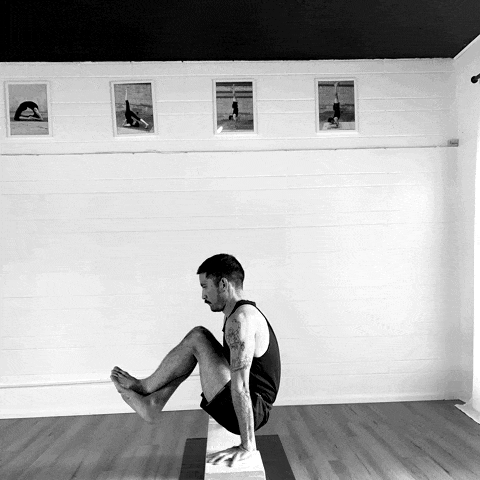KEY CONCEPTS OF BHEEMASHAKTI YOGA
1. Origins
2. 7 Dimensions
3. Mandala
4. Kriya
5. Breathing Techniques
6. Body Priming
7. Meditation
ORIGINS
Bheemashakti Yoga was created in Mysuru, India in 2005 as a result of a deep relationship between yoga teacher Jonathan Patriarca and his teacher, Master HR Suresh. Together they built a yoga center where they trained students in body transformation and meditation techniques.
7 DIMENSIONS OF THE BODY CONCEPT
Bringing yin and yang into balance by systematically harmonizing the 7 major directions the body can open and energize. All yoga postures are based on a combination/variation of one or more of these dimensions. When the direction of opening has become “energized”, strength, flexibility, and endurance are equally balanced.
The 7 dimensions correlate to the 7 main chakras:
लँ
1. Leg Dimension
वँ
2. Forward Fold Dimension
र
3. Twisting Dimension
य
4. Backbend Dimension
Anahata · Heart
हँ
5. Shoulderstand Dimension
उँ
6. Handstand Dimension
ॐ
7. Forearmstand Dimension
Mandala
◯
Mandala Rhythm is a method of timing yoga practice for optimal transformation of body and mind consciousness. The Mandala Rhythm harmonizes the yoga practice with cycles in nature and the human body to achieve the greatest transformation with the least amount of resistance.
Kriya
Something that arrives from nothing, initiates the karmic ripple effect and then dissolves back into nothing. In this practice, it means repetitive cleansing movements. Moving energy along pathways, squeezing/compressing energy along pathways.
Breathing Techniques
Kapalabhati Breathing
Kapalabhati (literally “skull shining” breath), is a vigorous breathing technique of rapid short exhalations through the nose, using the power of the lower abdomen to expel the air. This breathing energizes the body and quickly strengthens the lower bandha system.
Bhastrika
Bhastrika or “bellow’s breath” is performed by using the belly as a bellows to vigorously pump the breath in and out of the nostrils. It is used to clear the channels and warm the body up before beginning the physical part of practice. Bhastrika allows the practitioner to “shake off” or loosen areas of tightness or stress.
Body Priming
Body priming refers to the systematic conditioning of the muscles and joints necessary to quickly and safely improve strength, flexibility and endurance.
The body priming process involves understanding the body’s natural state of openness and energization, or humming threshold. The humming threshold is when the internal body is warm and energization is at its optimum.
The humming threshold changes daily, and serves as a measurement or reference for physical progress. The main objective for priming the body is to move the humming threshold toward a more open and energized state in all 7 dimensions of the body. When practicing the BYS system one remains in constant awareness of this threshold and how it changes with practice. Each dimension will have different characteristics and rates of improvement, so it is important to observe the natural rhythm of contraction and expansion in the body.
Meditation
The BYS approach to yoga is deeply rooted in the belief that physical yoga practice is done to prepare the body for meditation.

















